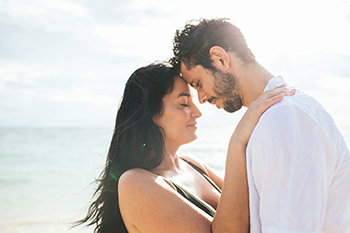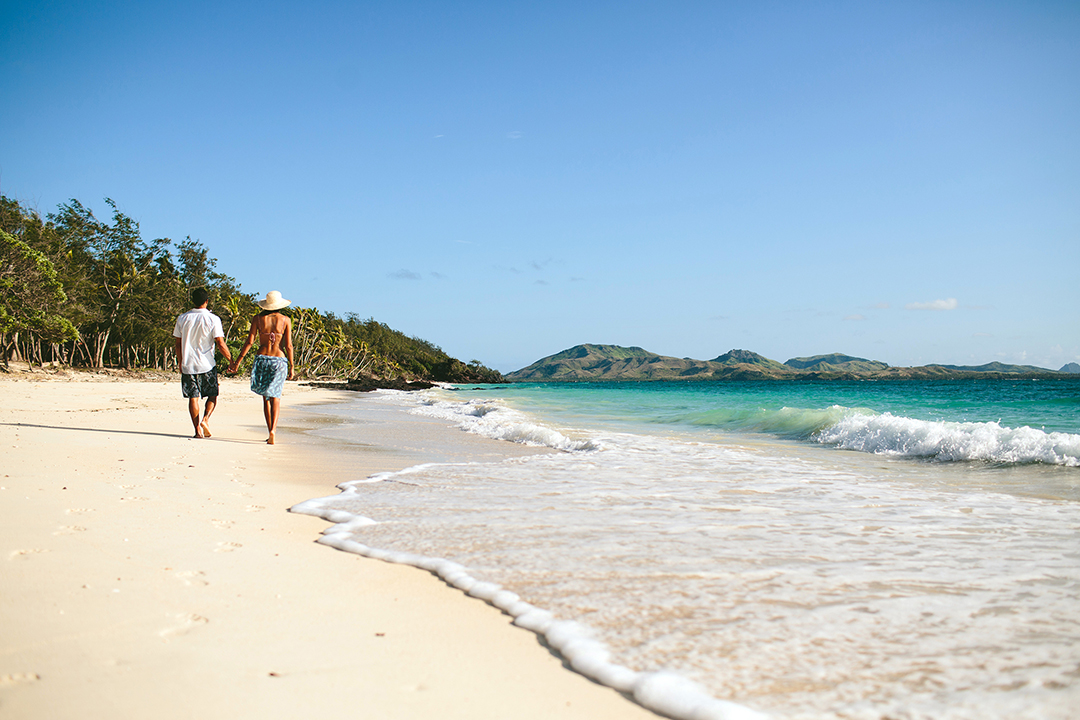Choosing between a Thailand vs Fiji vacation won’t be an easy choice, given the abundance of pristine beaches and warm waters, culture and history and some of the freshest and tastiest food you’ll ever experience.
Sitting in the middle of the South Pacific Ocean between Hawaii and New Zealand, Fiji is your quintessential tropical island getaway, comprising more than 300 islands and 540 islets.
Thailand is a Southeast Asian country, consisting of a larger main section in the north and a smaller peninsular in the south. The main body of Thailand is surrounded by Myanmar to the west, Laos to the north and east Cambodia to the southeast, with the Gulf of Thailand to the south.
Take a look at our guide to discover more about Fiji vs Thailand.
FIJI VS THAILAND: ACTIVITIES AND ADVENTURES
FIJI
 Surrounded by the warm tropical waters of the Pacific Ocean, much of Fiji’s appeal is the water. The diving and snorkeling here is world class with excellent visibility, lots of dive sites and easy access – either straight off the beach or from boat tours and day trips.
Surrounded by the warm tropical waters of the Pacific Ocean, much of Fiji’s appeal is the water. The diving and snorkeling here is world class with excellent visibility, lots of dive sites and easy access – either straight off the beach or from boat tours and day trips.
Fiji’s marine life is home to colorful exotic fish, corals, sea snakes and dolphins as well as five species of sea turtles including Green, Loggerhead and Hawksbill.
Appropriately known as the ‘soft coral capital of the world’, Fiji is home to more than 1,200 species of reef fish including angel, butterfly and lion fish as well as octopus, giant manta rays and moray eels.
On top of the water, Fiji doesn’t disappoint with a huge variety of watersports activities including surfing – Fiji’s Mamanuca Islands are home to some of the best surf breaks in the world including Cloudbreak, off Tavarua Island – sailing, kayaking and paddle boarding. Easy to reach from Fiji’s capital, Nadi, the Mamanuca Islands are a popular place to visit.
Tear yourself away from the water and you’ll discover that Fiji is bursting with rugged volcanic mountains, verdant rainforests and lush waterfalls. It’s a playground for adventure-seekers with adrenaline activities galore, ranging from hiking, cycling and white-water rafting. Slow the pace down a little with tours to traditional villages, steeped in Fijian culture.
And with 333 islands to explore, it’s the perfect place to island hop – in particular to the Yasawa islands, a stunning group of islands to the north-west of Fiji.
THAILAND
Known for its tropical beaches, ancient ruins and ornate temples displaying figures of Buddha, Thailand is a popular vacation destination for people looking for adventure and excitement.
vacation destination for people looking for adventure and excitement.
Thailand boasts vibrant floating markets, remote jungles and a patchwork of landscapes and farming villages criss-crossed by bright green rice paddies. The street food in Thailand is some of the best in Asia where you’ll be served a Phad Thai made fresh in front of your eyes.
In the vibrant capital of Bangkok, there are modern skyscrapers that sit alongside quiet canalside communities and the iconic temples of Wat Arun, Wat Pho and the Emerald Buddle Tempe (Wat Phra Kaew).
A trip to the Grand Palace is a must-do on any trip to Thailand as are the street markets and the shopping opportunities where tailors will whip up a silk suit or dress in no time at all.
And no visit to Bangkok would be complete without a tuk-tuk ride, a three-wheeled colorful mode of transport that has become one of the best ways to navigate the traffic-clogged city – and an enduring symbol of Bangkok.
For beach lovers, Thailand has golden sands of Hua Hin, the popular island resort of Phuket in the Andaman Sea or the smaller islands of Koh Samui. There are less developed resorts in Phang Nga Bay, while Krabi, Koh Kood and Koh Lanta all boast pristine waters with stunning beaches.
FIJI VS THAILAND HONEYMOON
 If you’re thinking about a Fiji vs Thailand honeymoon then you’ll be expecting picture-postcard beaches, warm waters and plenty of romance from candlelit dinners and private accommodation.
If you’re thinking about a Fiji vs Thailand honeymoon then you’ll be expecting picture-postcard beaches, warm waters and plenty of romance from candlelit dinners and private accommodation.
FIJI HONEYMOON
With its tropical location, white-sand beaches and tropical backdrop it’s easy to see why Fiji constantly ranks as one of the top destinations for honeymoon vacations.
Accommodation for honeymooners in Fiji will either be in a luxury hotel or more private resort where guests stay in a villa or bure, with rooms influenced by Fijian houses, with a thatched roof, sitting alongside a beach or overlooking a lagoon.
They can expect to be pampered with Fijian spa treatments using local ingredients, plus lots of Fijian customs to enjoy, including lovo, where fresh seafood caught that day, is cooked in an underground oven, and lively traditional dance events, called meke.
On Turtle Island Fiji – for just 14 couples at any one time – all guests are assigned their very own ‘bure Mama’ when they arrive. From her very first ‘bula!’ greeting, she’ll attend to your every whim, from unpacking your suitcase and taking care of your laundry, to ironing your clothes and arranging private beach picnics. Trust us – you won’t want to leave without her!
THAILAND HONEYMOON
 A honeymoon to Thailand is an unforgettable experience, offering luxurious hideaways, world-renowned resorts and secluded beaches.
A honeymoon to Thailand is an unforgettable experience, offering luxurious hideaways, world-renowned resorts and secluded beaches.
Couples can choose from a huge variety of resorts and hotels, from lively beach scenes to private hideaways; hilltop retreats to celebrity hangouts in the city.
There’s also the option of having a multi-center honeymoon vacation where a beach stay is combined with a few days in Chiang Mai, in Thailand’s cultural north.
FIJI VS THAILAND: WEDDING
 When it comes to destination weddings, Fiji and Thailand pack a punch. You can tie the knot on the beach – backed by palm trees or jungles – in the mountains or under waterfalls. The natural beauty of both Fiji and Thailand is such that there simply won’t be a bad wedding day pic.
When it comes to destination weddings, Fiji and Thailand pack a punch. You can tie the knot on the beach – backed by palm trees or jungles – in the mountains or under waterfalls. The natural beauty of both Fiji and Thailand is such that there simply won’t be a bad wedding day pic.
Why not rent your own island in Fiji? For a tropical wedding, renting your own island, surrounded by friends and family, has to be the ultimate place to say ‘I do’.
When choosing between a wedding on Fiji or Thailand, take a look at what’s available at different resorts and hotels – most will have wedding packages with wedding organisers and events specialists.
In Fiji you can expect to see the bride arrive at her chosen beach by boat, heralded by the sound of a conch shell blown by a Fijian warrior.
In Thailand, popular locations include Krabi and Khao Lak, with their emerald green waters and limestone cliff formations making for the perfect backdrop.
HOW TO GET TO FIJI AND THAILAND?
 Thai Airways has flights from Los Angeles to Bangkok’s Suvarnabhumi Airport, with a one-hour stop in Seoul, Japan. There are lots of other airlines that fly to Thailand from east and west coast cities with one stop en-route. Flight times from the US are 20 hours from New York including stopovers or around 17 hours nonstop.
Thai Airways has flights from Los Angeles to Bangkok’s Suvarnabhumi Airport, with a one-hour stop in Seoul, Japan. There are lots of other airlines that fly to Thailand from east and west coast cities with one stop en-route. Flight times from the US are 20 hours from New York including stopovers or around 17 hours nonstop.
To reach Thailand from Australia, there are plenty of flights from Sydney and Melbourne with Thai Airways, Qantas and Singapore Airlines. Flight times are around nine and a half hours direct.
Travelling to Fiji from the US will normally take around eight to 11 hours. From Australia or New Zealand, the flight time is just four to seven hours. Fiji’s national carrier is Fiji Airways which operates daily direct flights from Sydney, Auckland, Los Angeles, San Francisco and Singapore.
Flying into Fiji, you’ll land at Nadi International Airport on Viti Levu, from where you can head out to the smaller islands by boat, seaplane or helicopter.
You can combine a visit to Fiji and Thailand – and if you’re traveling all the way from the US then it makes sense to try and visit both countries if you can. So how far is Thailand from Fiji? It’s around 9,000 km and there are flights from Bangkok to Nadi with Fiji Airways, Singapore Airlines and Cathay Pacific with stops in Hong Kong and Singapore.
THE BEST TIME TO VISIT FIJI OR THAILAND
 Fiji and Thailand share similar climates due to their tropical location close to the equator.
Fiji and Thailand share similar climates due to their tropical location close to the equator.
There are two main seasons in either Fiji or Thailand – winter and summer. Winter, which is also the dry season, runs from May to November where temperatures range from 19°C – 29°C. Summer (the wet season) runs from December to April and sees temperatures sitting at a comfortable 22°C – 33°C.
The main difference between the two seasons in Fiji and Thailand is the amount of rainfall, which can be minimal depending on where you go. The islands in the West of Fiji, such as the Yasawa islands usually see a dry and sunny climate year round.
In Thailand the weather varies between beach resorts. The east coast island resorts like Koh Samui and Koh Pha Ngan are sunnier and less rainy from May to June, whereas northern Thailand is cooler than Bangkok in the winter and hotter in the summer.
COST OF FIJI VS THAILAND
The cost of a vacation to Fiji or Thailand is likely to be fairly similar with both destinations offering a good selection of leading international hotels and resorts as well as smaller, more boutique properties.
Nightly resort rates in both destinations will fluctuate depending on the season, with typically more deals to Fiji and Thailand around November to March
In Fiji and Thailand you’ll find the local transport and restaurants are comparable, as are the cost of food at local restaurants, street stalls and markets, where it’s acceptable to engage in some friendly bartering.
EXPLORE TURTLE ISLAND FIJI
For world-class diving, pristine beaches and a slice of tropical paradise, Fiji is the destination for you.
For a truly authentic Fijian vacation look no further than the private sanctuary of Turtle Island Resort. With accommodation for just 14 other couples, Turtle Island offers a retreat with 500 acres of lush forests to explore and 12 private beaches.
Get in touch today to start planning the vacation of your dreams.









